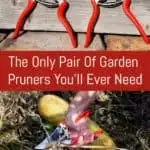
Disclaimer: This is NOT a sponsored post. We have not been paid by any brands to publish this article. This article is based on the authors’ experience with her garden pruners. Having said that, we may earn a commission if you decide to buy any of the products we recommend in this article – or in any other articles on this website.
Whether you are a homesteader or hobby/professional gardener (or both!) you will absolutely need a hard-working pair of pruners by your side from season to season.
Naturally, there are plenty of other tools that will come in handy to accomplish daily tasks in your backyard and garden.
However, if you find that you spend a significant part of your day outside dealing with plants, now is the time to make your life easier and buy a quality pair of pruners – once and for good!
We’ve all been down that route of buying what we can find and what is affordable at a local hardware or gardening store. When choices feel limited and budgets are the bottom line, we tend to think of short-term solutions.
All I can say, is that cheapness comes with a price.
Go for low cost and you may end up re-buying the same “new” item again the following year.
Inferior tools also diminish the joy of working and it definitely isn’t earth-friendly to produce items that are known to break.
So, where do you turn when you want to prune your plants (from basil to grapevines and fruit trees) to their very best?
How to choose hand pruners (secateurs)
For light work, a pair of garden scissors or flower shears will be sufficient, when dealing with soft tissue stems. Anything tougher than that, including woody stems, and you’ll be needing the strength that quality pruners are capable of to deliver.
There are 3 types of hand pruners to choose from:
- bypass
- anvil
- ratchet
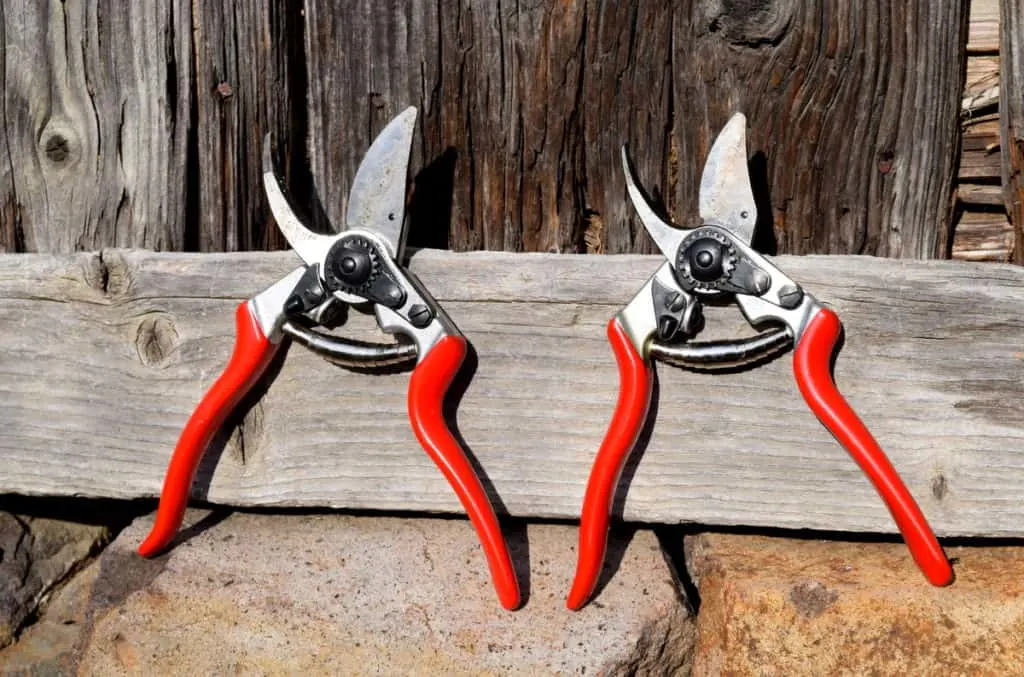
Bypass pruners are the most common type of hand pruners, and they are popular for a good reason. They make a neat cut similar to that of scissors, as they prevent crushing of soft tissues.
Bypass pruners are perfect for trimming fruit trees, raspberry canes and vines.
Anvil pruners have a straight cutting blade, and the motion is akin to cutting across a branch with a knife, with a stable blade on the other side. The blade forces its way through the woody stem, causing tissue damage on both sides of the cut.
Rather than use anvil pruners for cutting green wood, they should be used for removing tough dead wood.
Ratchet pruners are similar to an anvil pruner. They have a sharp blade for cutting that falls flat on a dull edge, as they perform a cutting action in stages. The pressure increases as the ratchet clicks, making it easier to cut through a larger branch.
If you have difficulties with motor skills due to arthritis or carpal tunnel, you may find ratchet pruners extremely useful in easing wrist strain and fatigue.
Depending on the type of woody material you will be cutting most, choose the best pair of pruners accordingly.
For general use, bypass pruners are simply the best.
The best pruners you can buy
Felco has been in the business of making quality horticulture and gardening tools since 1945 – and they are the only brand I use when it comes to garden pruners.
Once you decide that Felco pruners are the best for you, you will have plenty of styles to choose from.
Here are the two that we own and use on a regular basis in all four seasons.
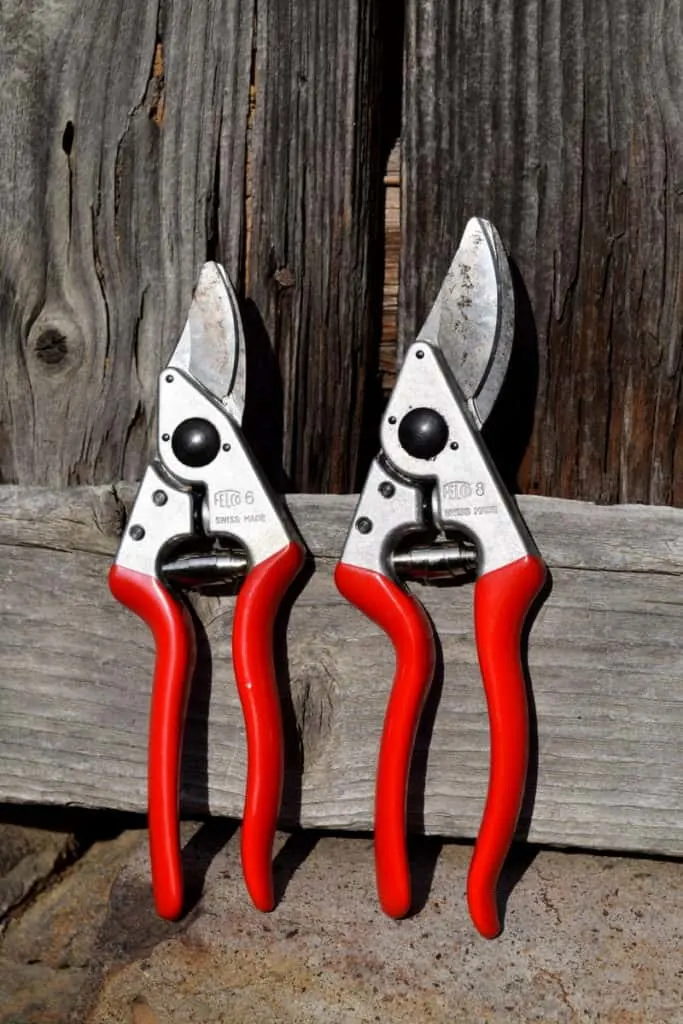
Felco 6
For smaller hands, Felco no. 6 is a wise choice.
It is also a wonderful way to set children to work in the garden, as they learn all about pruning different types of plants. Go over safety rules first, observe their skills and set them up for gardening success!
Felco 8
This ergonomically designed grip reduces strain on the wrists, just as it optimizes the force you are able to apply with each cut. You can work for extended periods of time with ease.
Felco F-8 classic pruners are our favorite for use in tree pruning, followed closely by Felco no. 2.
If you don’t want to keep losing the pruners on the ground, get a leather holster for carrying them around. Saves your pockets from getting ripped, and you will always know where your pruners are.
Ergonomic design
Pruning involves a lot of repetitive motion.
Gripping, clamping, holding, squeezing. It is hard work to prune back a 50′ length of hedgerow!
Even for the strongest hands, it is best to invest in a pair of pruners that fit your hands. Try them before you buy them, given the chance.
Ask lots of questions: is the size right, do they have rotating handles to lessen wrist action, are the handles cushioned, or are you left-handed (you can purchase special pruners for that)?
How long should a pair of pruners last?
There is no defined answer as to how many years, or decades, a pair of pruners should last, but as long as possible should be a good start.
My first pair of Felco pruners go all the way back to 1997. In the beginning they were used on an almost daily basis at a tree nursery/greenhouse, they survived an international move and retired to part-time use for more than a decade.
They were then gifted to a friend who still has them to this day.
Now we have two pairs in the family, since more hands make lighter work, and we have plenty of land and trees to maintain.
Are Felco pruners worth the extra money? Yes.
They are extremely durable, easy to handle and the cutting blades are crafted from hardened Swiss carbon steel. Quality at its best.
How to sharpen your pruners
Depending on how often your pruners are set to work – and how hard they are working – at some point they will need to be sharpened.
Monthly, or yearly, it all matters on how scratched up they get. Nothing beats a sharp blade in terms of ease and performance.
You can take them to a professional, or go the DIY route and sharpen (and clean) the pruners yourself.
To keep your pruners sharp, make sure to purchase a sharpening tool made of diamond-coated hardened steel.
Repairability: Finding replacement parts
In choosing the best pair of pruners, it is sensible to choose a brand that offers replacement parts.
Felco does just that. You can order any Felco spare part directly from their website. Blades, springs, adjustment key. If something is broken, you can replace exactly what you need – and quickly get back to work.
Felco pruners are the only pair you will ever need, though you may need more than one pair!
6 reasons for needing a reliable pair of pruners
As you discover a budding sense of self-reliance on the homestead, you will want to get out in the garden/backyard/orchard and get straight to business!
Working in the garden
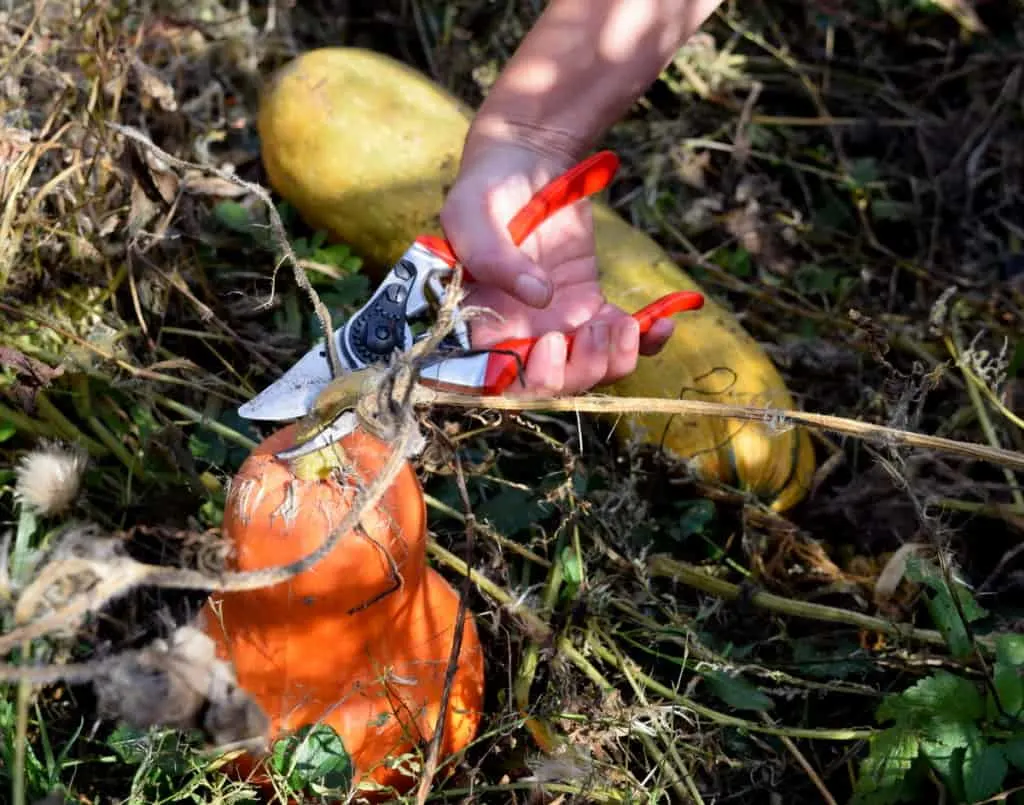
In the garden, pruners are a useful tool for cutting back mature squashes, pumpkins and overgrown weeds that grew to epic proportions while you were on vacation.
Harvesting willow and hazel branches
If you have access to willow or hazel bushes for turning branches into baskets, pruners will be your wintertime best friend.
Since you will be cutting into hundreds and thousands of branches, you will need a strong pair of pruners to make the job easy.
Managing hedgerows
I’ve seen people use a chainsaw to prune hedgerows and fence lines. While it may be a time-efficient way to go about it, it is also quite messy.
Get in there with loppers and pruners, make the necessary cuts, and make it beautiful.
Pruning and harvesting grapes
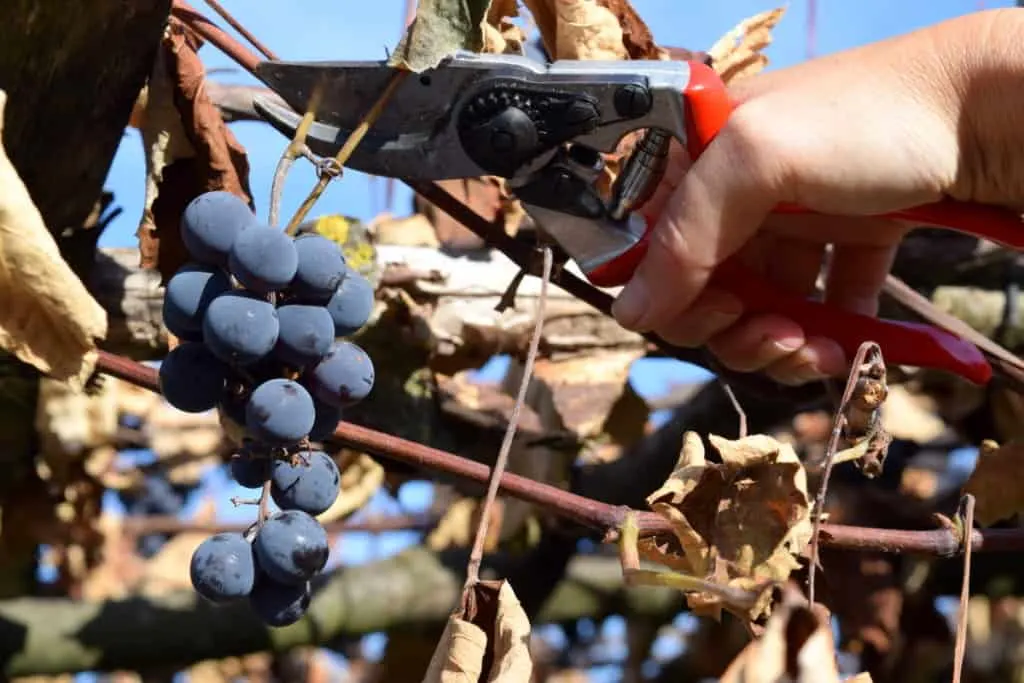
If you have a vineyard, pruners are a must.
When you have a few grapevines covering your pergola, pruners definitely come in handy for both winter and summer pruning of grapevines.
Deadheading and shaping roses
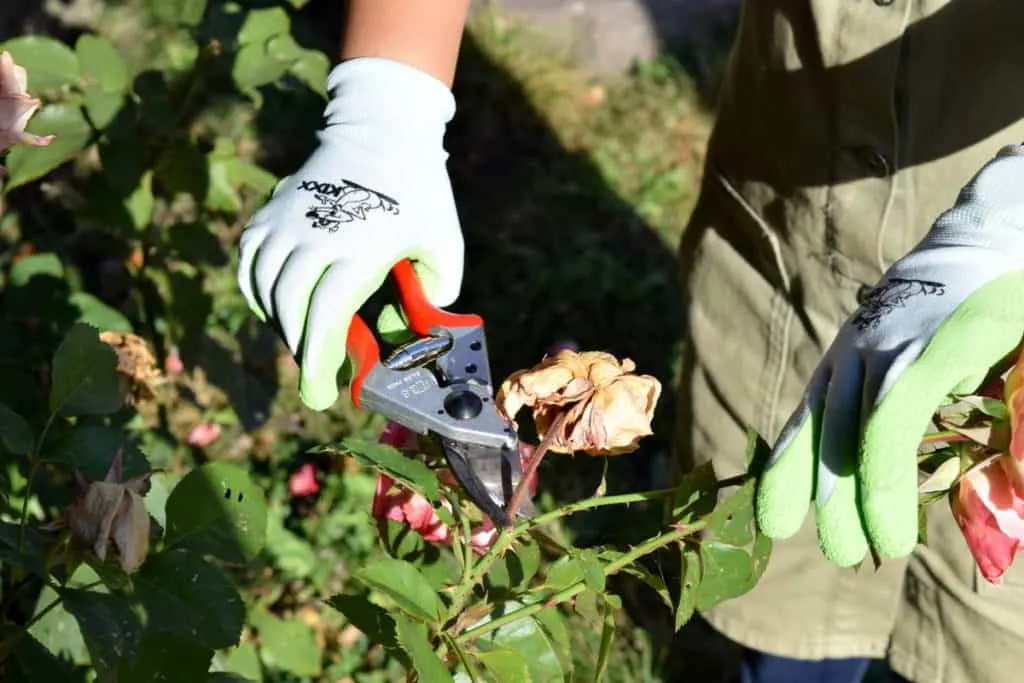
Roses produce aromatic blossoms throughout summer and autumn and need a late winter pruning to thrive. To keep them looking at their best, deadheading roses is an enjoyable and rewarding task.
If you get deep into pruning the thorniest of roses, please wear a pair of leather gloves to protect yourself!
Orchard management
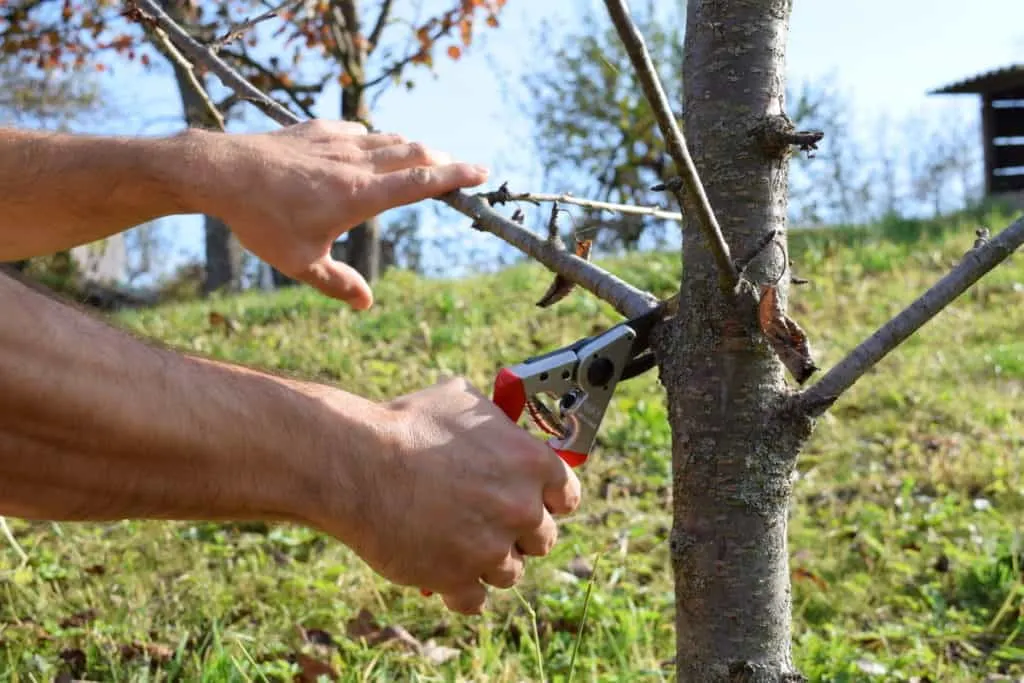
In the case that you only have one tree on your property, a pair of pruners will be a lifesaver when it comes time for winter pruning.
If you have fruit and nut trees to take care of, then a pair of pruners are absolutely essential. You’ll need to cut off lower branches, cut out dead wood and shape the trees over the years as they grow.
Pin This To Save For Later
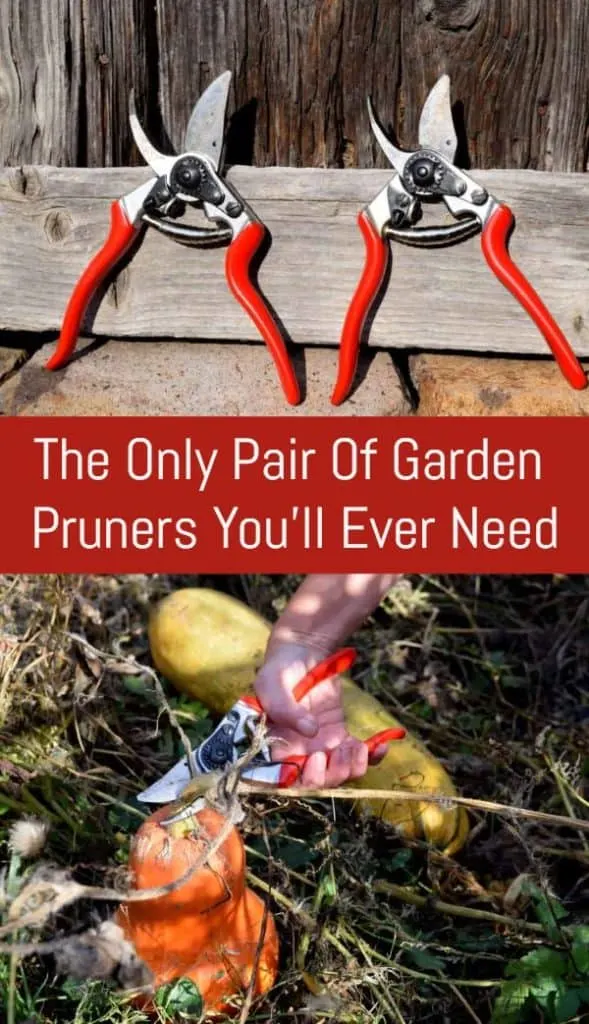

Get the famous Rural Sprout newsletter delivered to your inbox.
Including Sunday musings from our editor, Tracey, as well as “What’s Up Wednesday” our roundup of what’s in season and new article updates and alerts.


